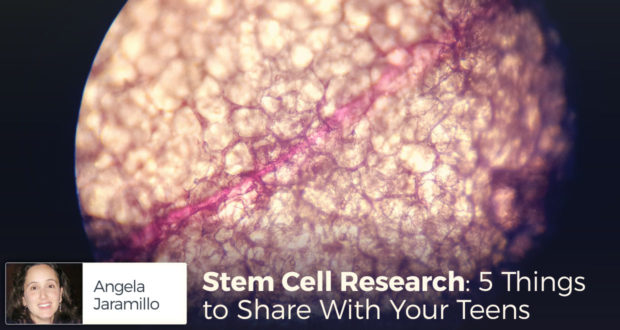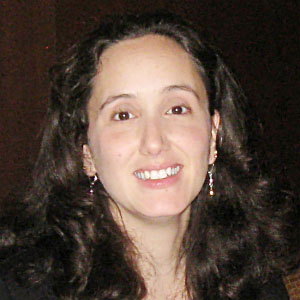Not all science is created equal. As a Catholic scientist, I tried my best to stay away from embryonic stem cell research, and to tell you the truth, it was no easy feat.
It’s expected for those in the biomedical fields to embrace the two major forms of stem cell research— embryonic and adult. The fact that it was even controversial came up only in a bioethics class I had at a Catholic university (not once in the secular universities I attended).
As parents we might think to ourselves that stem cell research is a too remote or complicated issue to discuss with our kids, but the truth is that we’re all regularly inundated with this topic. We’re exposed to these concepts in fiction and non-fiction books alike, movies, politics, science classes, the news and, of course, the doctor’s office!
In fact, US taxpayer money now funds both types of research.
Let’s teach our kids about this facet of the culture of life.
At what age is it appropriate to have a stem cell discussion? Definitely high school kids are well equipped to handle the topic and even tweens are highly capable. Just like with the topic of abortion, it is not necessary to discuss reproduction to have a talk with your children about stem cell research.
It’s a conversation about the dignity and worth of every person, young, old and unborn—discarded or created in the lab.
1. Stem Cell Research Offers Hope to Many
The noble aim of stem cell research is to save human lives. Many diseases kill cells within organs. For example, heart disease kills heart muscle cells.
Those with Type 1 Diabetes have dead insulin-producing cells in the pancreas. Patients with Parkinson’s disease have dying neurons that would normally control movement. Stem cell research offers hope to millions that “new” transplanted cells could save their lives.
Where do these new cells come from? At the moment there are several sources, but for the purposes of our talk it’s plenty to focus on the two big ones—embryonic and adult stem cells.
2. Embryonic Stem Cell Research Destroys Human Lives
According to the National Institutes of Health (NIH), a stem cell is a simple cell (undifferentiated) that is capable of developing into any one of various types of cells—such as blood cells, muscle cells, skin, neurons, etc.
Embryonic stem cells are derived from embryos. These embryos are fertilized human eggs either created for research in vitro (outside a living organism, like a culture dish) or are obtained from donations from in vitro fertilization clinics.
The inner cell mass is removed from the embryo and grown. As a result of this removal process, the embryo is destroyed.
3. Adult Stem Cells Can Be Used Without Destroying Lives
Adult stem cells are found in the tissue and organs for which the human body intends to use them. The primary role of an adult stem cell is to become that tissue cell and thus repair and maintain that tissue.
Adult stem cells have been identified in many organs and tissues, including brain, bone marrow, peripheral blood, blood vessels, skeletal muscle, skin, teeth, heart, gut, liver, ovarian epithelium, and testis.
As a result of having so many sources of adult stem cells, no lives are destroyed.
4. The Church Teaches Human Life Must Be Protected
What’s the big deal Mom and Dad? Why shouldn’t we use embryonic tissue for research and treatments?
As Catholics, protectors of the culture of life, we understand that embryos are human even if they are described secularly as a “clump of cells.”
As the Pontifical Academy of Life explains from various encyclicals, “The human being is to be respected and treated as a person from the moment of conception; and therefore from that same moment his rights as a person must be recognized, among which in the first place is the inviolable right of every innocent human being to life.”
Furthermore, excerpts from the Catechism of the Catholic Church tell us: [2275] it is immoral to produce human embryos intended for exploitation as disposable biological material, and [2295] research or experimentation on the human being cannot legitimate acts that are in themselves contrary to the dignity of persons and to the moral law.
There is no confusion here. It is quite clear that our Church does not sanction the destruction of human embryos for the promises of improved health.
5. The Ends Do Not Justify the Means
As we discuss with our kids the various ethical questions that will undoubtedly surface as science and technology expand new frontiers, let’s remember to teach that the ends do not justify the means.
The good news for humanity is that we have an excellent alternative to embryonic stem cell research that upholds the culture of life.
Adult stem cell research represents a more ethical and reasonable approach in a field aimed at saving and improving human lives.
Thanks be to God this offers a great hope for scientists, patients and their families.

 Seton Magazine Catholic Homeschool Articles, Advice & Resources
Seton Magazine Catholic Homeschool Articles, Advice & Resources

